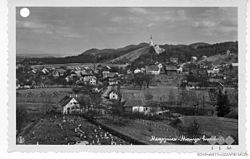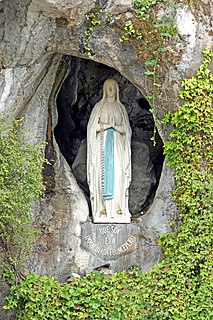
Žalec is a town in central Slovenia. It is the seat of the Municipality of Žalec. It lies in the valley of the lower course of the Savinja River west of Celje. The primary economic activity of the region is growing hops, which is reflected by the city's coat-of-arms. The area was part of the traditional region of Styria. The municipality is now included in the Savinja Statistical Region.

Arja Vas is a roadside settlement in the Municipality of Žalec in east-central Slovenia. The A1 motorway crosses the territory of the settlement north of the village. The area is part of the traditional region of Styria. The municipality is now included in the Savinja Statistical Region.

Dobriša Vas is a settlement in the Municipality of Žalec in east-central Slovenia. It lies on the left bank of the Savinja River southeast of the town of Žalec. The area is part of the traditional region of Styria. The municipality is now included in the Savinja Statistical Region.
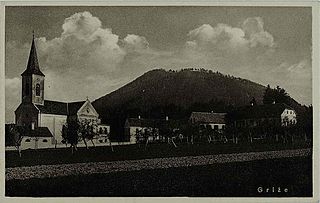
Griže is a village on the right bank of the Savinja River in the Municipality of Žalec in east-central Slovenia. The area is part of the traditional region of Styria. The municipality is now included in the Savinja Statistical Region.

Hramše is a village in the Municipality of Žalec in east-central Slovenia. It lies in the Hudinja Hills north of Žalec. The area is part of the traditional region of Styria. The municipality is now included in the Savinja Statistical Region.
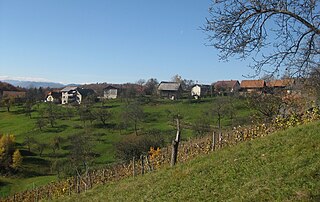
Kale is a village in the Municipality of Žalec in east-central Slovenia. It lies in the Ložnica Hills north of Šempeter v Savinjski Dolini. The area is part of the traditional region of Styria. The municipality is now included in the Savinja Statistical Region.

Kasaze is a village on the right bank of the Savinja River in the Municipality of Žalec in east-central Slovenia. Traditionally the area was part of the Styria region. The municipality is now included in the Savinja Statistical Region.

Levec is a village in the Municipality of Žalec in east-central Slovenia. It lies on the left bank of the Savinja River between Žalec and Celje. The area is part of the traditional region of Styria. The municipality is now included in the Savinja Statistical Region.
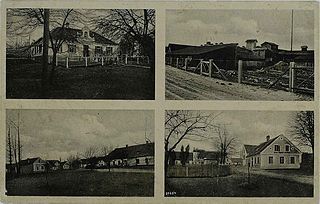
Ložnica pri Žalcu is a settlement north of Žalec in east-central Slovenia. The A1 motorway crosses the territory of the settlement north of the village. The area is part of the traditional region of Styria. The entire Municipality of Žalec is now included in the Savinja Statistical Region.

Mala Pirešica is a settlement in the lower Savinja Valley in the Municipality of Žalec in east-central Slovenia. The A1 motorway crosses the territory of the settlement south of the village core. The area is part of the traditional region of Styria. The municipality is now included in the Savinja Statistical Region.

Petrovče is a village on the left bank of the Savinja River in the Municipality of Žalec in east-central Slovenia. The area is part of the traditional region of Styria. The municipality is now included in the Savinja Statistical Region.

Podkraj is a settlement in the Municipality of Žalec in east-central Slovenia. It lies in the eastern part of the Ložnica Hills north of Žalec. The area is part of the traditional region of Styria. The municipality is now included in the Savinja Statistical Region.

Podlog v Savinjski Dolini is a settlement in the Savinja Valley in the Municipality of Žalec in east-central Slovenia. It lies northeast of Šempeter. The area is part of the traditional region of Styria. The municipality is now included in the Savinja Statistical Region.

Ponikva pri Žalcu is a village in the Municipality of Žalec in east-central Slovenia. It lies in the Ložnica Hills northwest of Žalec. The area is part of the traditional region of Styria. The municipality is now included in the Savinja Statistical Region.

Ruše is a small settlement in the Municipality of Žalec in east-central Slovenia. The A1 motorway runs just north of the village. Traditionally the area was part of Styria. The municipality is now included in the Savinja Statistical Region.

Spodnje Roje is a small settlement in the Municipality of Žalec in east-central Slovenia. It lies on the left bank of the Savinja River southwest of Žalec. The area is part of the traditional region of Styria. The municipality is now included in the Savinja Statistical Region.

Šempeter v Savinjski Dolini is a village in the Municipality of Žalec in east-central Slovenia. It lies on the left bank of the Savinja River east of Žalec. The Slovenian A1 motorway crosses the territory of the settlement northwest of the village core. The area is part of the traditional region of Styria. The entire municipality of Žalec is now included in the Savinja Statistical Region.
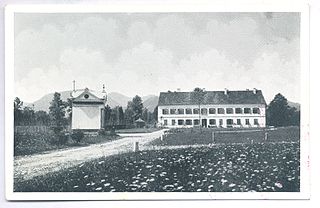
Vrbje is a settlement in the Municipality of Žalec in east-central Slovenia. It lies south of Žalec on the left bank of the Savinja River. Traditionally the area was part of Styria. The municipality is now included in the Savinja Statistical Region.

Železno is a small settlement in the Municipality of Žalec in east-central Slovenia. It lies on the southwestern edge of the Hudinja Hills north of Žalec. The area is part of the traditional region of Styria. The municipality is now included in the Savinja Statistical Region.

Grče is a village in the Municipality of Žalec in east-central Slovenia. It lies on the southwest part of the Ponikva Plateau. The area is part of the traditional region of Styria. The municipality is now included in the Savinja Statistical Region.



